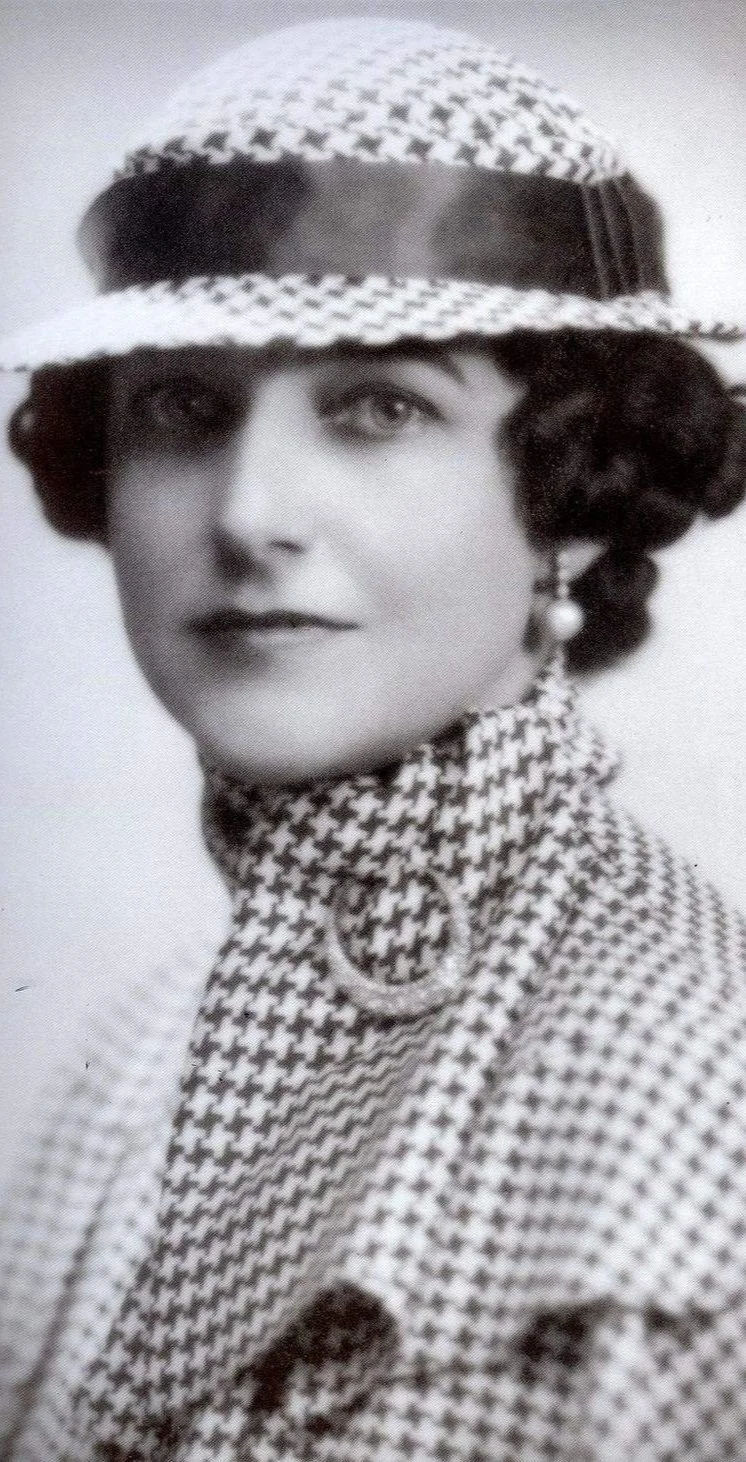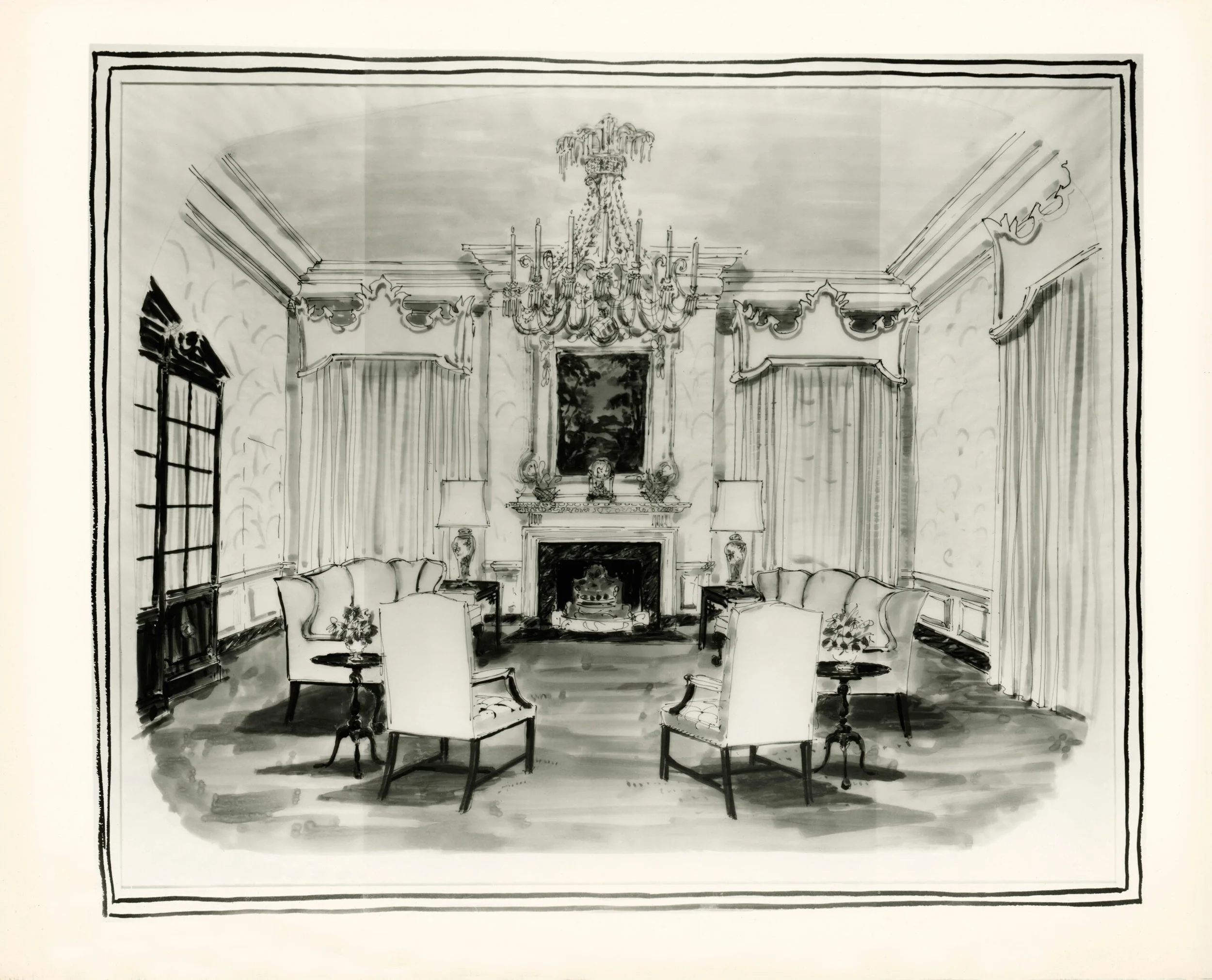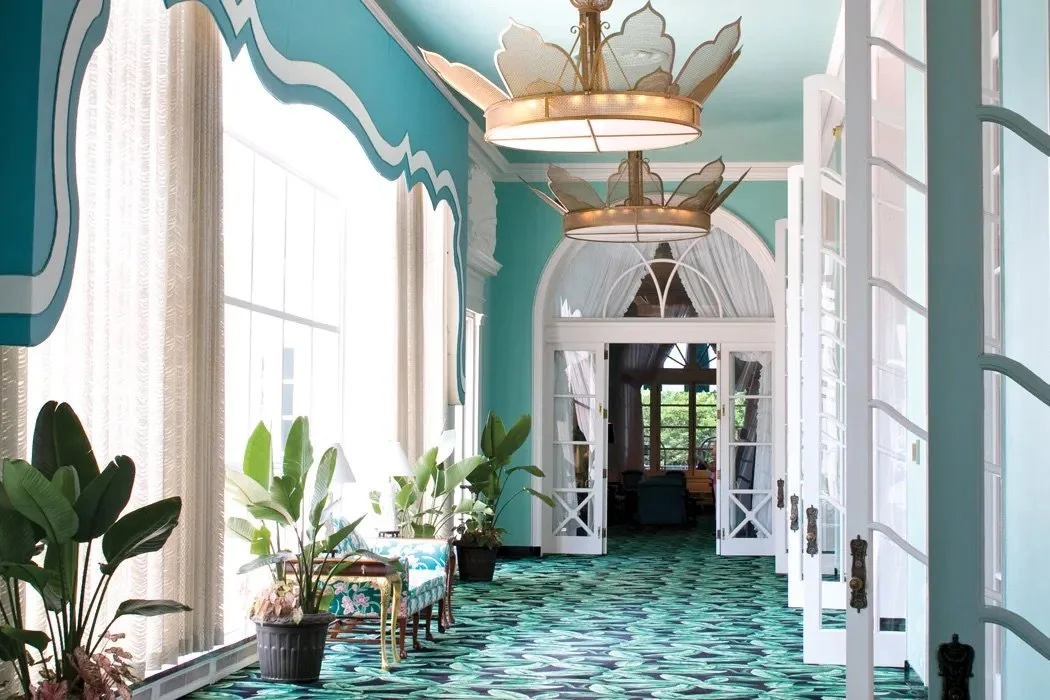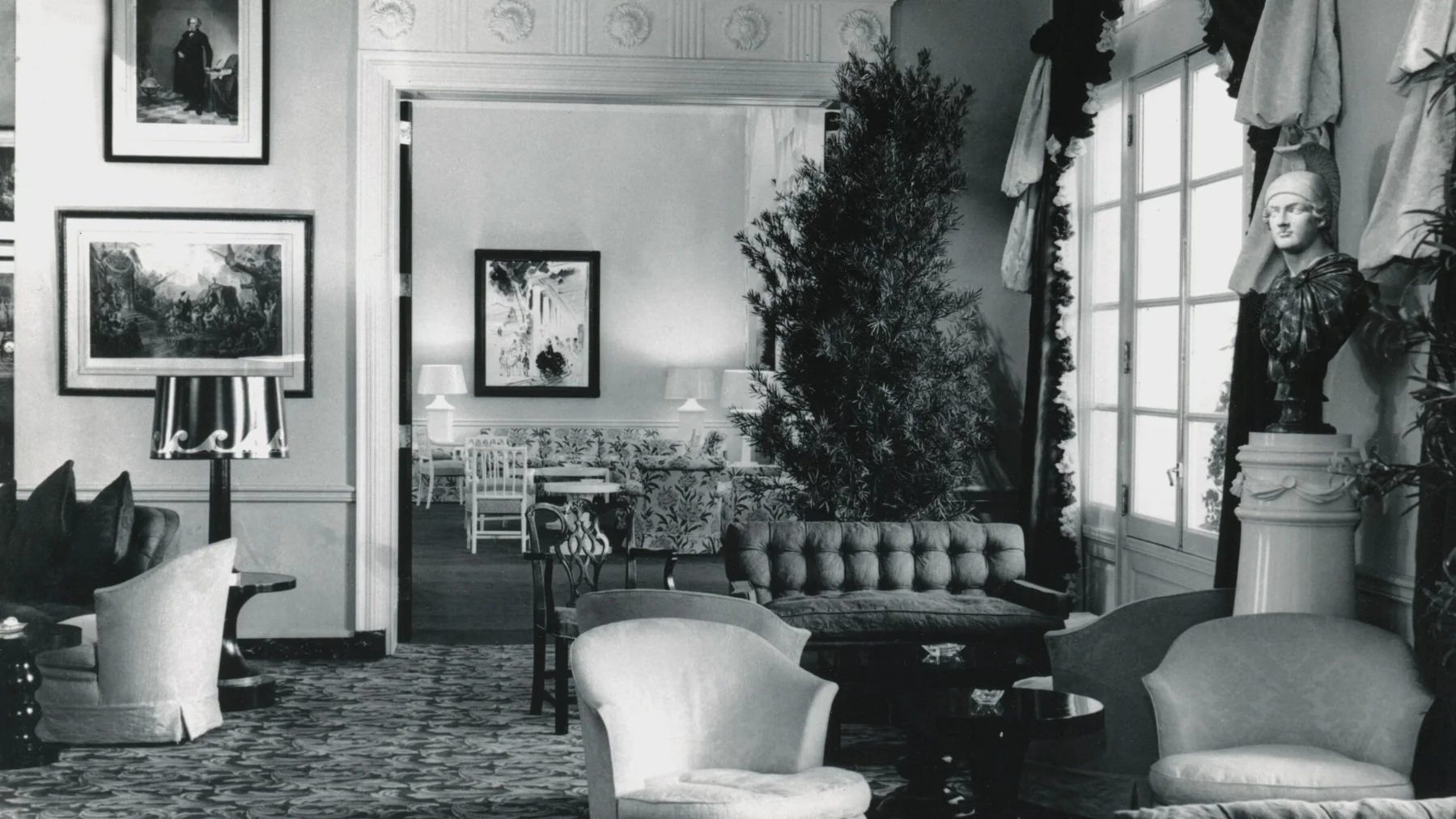About Her: Interior Designer Dorothy Draper
Image Source: Dorothy Draper
Dorothy Draper redefined American interior design with her theatrical flair, bold color choices, and unapologetic confidence. Her maximalist sensibility—oversized florals, glossy finishes, and grand architectural gestures—ushered in a new era of visual exuberance, setting the tone for modern luxury in America.
Born in 1889 into the upper-crust Tuckerman family of Tuxedo Park, New York, Draper’s childhood was one of privilege and proximity to power: her great-grandfather, Oliver Wolcott, signed the Declaration of Independence. Surrounded by the aesthetics of wealth, grand homes, fine art, and gilded traditions Dorothy had an unshakable instinct for beauty and fine detailing from a young age. Although having a limited education, spending two years at an all girls school with the rest taught from home, her instinct helped her become successful in her own right.
In 1912, she married Dr. George “Dan” Draper, and the pair began buying and renovating homes, a hobby that quickly became her calling. After redecorating several of their own properties, Draper’s style caught the attention of her social circle. Friends began asking her to design their homes, and by 1925, she formalized her practice under the name Architectural Clearing House, making her one of the first women to found and run a design firm on her own. By the late 1920s, after a series of successful apartment commissions, the firm became Dorothy Draper & Company. At a time when women in design were rarely acknowledged, let alone leading firms, Draper was a trailblazer.
Image Source: Edward Lynch
From there, her rise was meteoric. By the 1930s, Draper was transforming New York apartments and hotels into theatrical interiors full of spirit and sophistication. She became well known for her maximalist palette of vivid color, bold stripes, and eye-catching patterns—paired with her signature black-and-white checkerboard floors, cabbage rose chintz, and plaster flourishes that planted the seed for the Hollywood Regency style. Through the 1940s and 50s, she took on monumental commissions doing work in hotels, museums and even car interiors. During the Great Depression, she wrote a syndicated advice column and launched wildly popular fabric lines, proving that style and optimism could coexist—even in lean times.
In 1952, Dorothy Draper attended a dinner hosted by the American Institute of Decorators in honor of Frank Lloyd Wright. True to form, Wright’s ego stole the spotlight during his speech. “I don’t call them interior decorators,” he quipped, somewhat surprisingly at a dinner hosted by the very people he was criticizing. “I call them inferior desecrators.” Then, with no attempt at subtlety, he singled out Draper: “And the greatest inferior desecrator of all is Dorothy Draper. She doesn’t know anything. All she knows is God made some flowers.” This comment also detracts from the fact Draper was not just a decorator (not to mention that decorators have their own respectful place and value in the design world); she was an interior designer and interior architect who had managed to beat a lot of odds as a woman in business to be where she was.
The room erupted in boos. All eyes turned to Draper, anticipating a cutting comeback. But instead, she offered something far more enigmatic. According to her protégé Carleton Varney, she simply called out, “Yoo hoo, Mr. Wright. Here I am,” before graciously thanking him for the mention. She added that she admired his work and was pleased he was familiar with hers.
Draper retired in 1960 and passed away in 1969, but her influence never left. Today, her legacy lives on through designers who continue to draw on her rule-breaking, joy-filled approach to interiors, and the idea that high end design does not need to mean boring. Her firm Draper & Co is still in operation today; run by the sons of her protege Carleton Varney, who first joined her in the 1950’s.
Below, we revisit three of our favourite projects that embody Draper’s fearless creativity, lasting influence, and signature flair.
Image Source: Library of Congress
Project one: The Greenbrier Hotel
White Sulphur Springs, West Virginia (1946–60s)
Image Source: Dorothy Draper
Drawing from a palette of mint green, coral, yellow, and black-and-white, Draper created a maximalist playground that was both luxurious and inviting. The checkerboard floors, towering floral arrangements, and neoclassical motifs injected drama into every corridor. Draper believed rooms should lift people’s spirits—and The Greenbrier became a living expression of that philosophy.
Image Source: Victoria Mag
Much of her original work remains intact today, lovingly maintained by her firm (Dorothy Draper & Co.), which still consults on the property. Recent updates to the hotel have thoughtfully preserved Draper’s legacy, honouring her original vision while keeping the spirit of her design very much alive. A visit here is a step into a meticulously preserved design fantasy, a total pilgrimage for design-philes (www.greenbrier.com).
Image Source: Dorothy Draper & Company
Her interiors at The Carlyle were more subdued than her later maximalist work, yet still distinctively hers—mirrored surfaces, rococo flourishes, and sophisticated color pairings gave the hotel a fresh kind of opulence. Draper understood the power of atmosphere, and The Carlyle became synonymous with Upper East Side chic, a reputation it still holds today. In the 1940’s, Ludwig Bemelman (author of the Madeleine book series) painted his famous mural inside what is now Bemelman’s Bar. It’s not known if Draper and Bemelman knew each other, however this mural has cemented the hotel firmly into NYC must-do’s when visiting.
Image Source: Dorothy Draper & Company
Lingua Franca Uptown references Bemelman’s free lined, romantic mural style, as painted by @pauline_de_roussy_de_sales - a short walk from the Carlyle.
Though many of her original interiors have since evolved, Draper helped set the visual tone for The Carlyle's identity—and for high society hospitality more broadly.
Image Source: Studio Sio
Project three: The Metropolitan Museum of Art – Roman Court
New York City (1950s)
One of Draper’s lesser-known but equally ambitious commissions was the Roman Court at The Met. In the 1950s, she was asked to reimagine this classical gallery space—and she didn’t hold back.
Leaning into her love for grandeur, Draper paired Greco-Roman sculpture with glossy black-and-white flooring, dramatic lighting, and richly upholstered seating. While some critics balked at the theatricality, the project exemplified her belief that design should engage the senses and draw people in. Museums, like hotels or homes, could be immersive.
Image Source: Dorothy Draper & Company
Though the Roman Court has since been reconfigured, the project remains a notable example of Draper’s boldness—and her willingness to infuse even sacred cultural spaces with emotion and flair.
Draper’s influence can still be felt in hotels, department stores, and institutional buildings across the country. Her use of color, contrast, and scale rejected the idea that good taste must be restrained.
Image Source: Dorothy Draper & Company
Dorothy Draper brought boldness, glamour, and fearless flair to every space she touched; redefining American interior design with her signature style. We hope you enjoyed stepping into Dorothy’s vibrant world through this month’s blog.
Text Sources:












